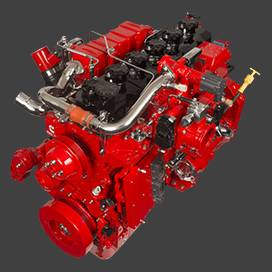12 月 . 03, 2024 18:55 Back to list
rear brake drum replacement
Rear Brake Drum Replacement A Comprehensive Guide
Brake systems play a crucial role in ensuring the safety and functionality of your vehicle. Among the various components of a braking system, rear brake drums are essential for safe vehicle operation. Over time, these drums can wear down and require replacement. In this guide, we will explore the reasons for rear brake drum replacement, how to identify when they need replacing, and the detailed steps involved in the replacement process.
Understanding Brake Drums
Brake drums are part of a drum brake system, which is commonly used in the rear wheels of many vehicles. When you press the brake pedal, hydraulic fluid is sent to the brake shoes, which press against the inside of the drum, creating the friction needed to slow down or stop the vehicle. Due to constant exposure to friction, heat, and environmental factors, brake drums can wear out, corrode, or become warped.
Signs It's Time for Replacement
1. Squeaking or Squealing Sounds One of the most common indicators that your brake drums need attention is unusual noise when braking. Squeaking or squealing can signal worn-out brake shoes or damaged drums.
2. Vibrations When Braking If you feel vibrations or pulsations when you apply the brakes, it could indicate that the drum is warped. This warping can occur due to excessive heat buildup or wear.
3. Reduced Braking Performance If braking feels less effective than usual or if the vehicle takes longer to respond, it might be time to inspect the brake drums.
4. Visibly Damaged Drums Occasionally, a visual inspection will reveal cracks, grooves, or corrosion on the brake drums. If you see any damage, replacement is necessary.
5. Brake Warning Light Modern vehicles are equipped with warning lights that indicate brake issues. If the brake warning light illuminates, it’s essential to get the system checked.
The Replacement Process
If you’ve diagnosed that your rear brake drums need replacement, follow these steps for a successful DIY job
. Always ensure that you have the necessary tools and safety gear before starting.Tools and Materials Needed
- Jack and jack stands - Lug wrench - Brake drum puller - Brake cleaner - New brake drums - New brake shoes - Wrenches and sockets - Torque wrench - Safety glasses and gloves
rear brake drum replacement

Step-by-Step Guide
1. Preparation Begin by ensuring that your vehicle is parked on a flat surface. Engage the parking brake and wear safety glasses and gloves for protection.
2. Loosen Lug Nuts Using a lug wrench, slightly loosen the lug nuts on the rear wheels before lifting the vehicle.
3. Raise the Vehicle Employ a jack to lift the rear end of your vehicle, then secure it with jack stands for safety. Remove the lug nuts and wheels.
4. Remove Old Brake Drums Inspect the drum and locate the retaining screws. If present, remove them. Gently pull the drum off. If it’s stuck, a brake drum puller may be necessary.
5. Inspect Brake Shoes Once the drum is off, check the brake shoes for wear. If they show significant signs of wear, it’s a good idea to replace them simultaneously.
6. Clean Components Use brake cleaner to remove dust and debris from the drum assembly. This helps ensure proper function and reduces contamination.
7. Install New Brake Drums Place the new brake drums onto the wheel hub, ensuring they fit snugly. Reinstall retaining screws if applicable.
8. Reassemble Once the new drums are in place, reinstall the wheels and hand-tighten the lug nuts. Lower the vehicle back to the ground and then use a torque wrench to tighten the lug nuts to the manufacturer’s specifications.
9. Test the Brakes Before hitting the road, pump the brake pedal several times to ensure the new shoes seat properly against the drums. This step is crucial for optimal braking performance.
10. Road Test Finally, take the vehicle for a test drive to ensure that the brakes are functioning correctly. Pay attention to any unusual noises or vibrations.
Conclusion
Replacing rear brake drums can seem daunting, but with the right tools and a little patience, it’s a manageable task for many DIY enthusiasts. Regular maintenance of your braking system is vital for the safety of your vehicle and its occupants. Always consult your vehicle’s manual and follow proper safety protocols when working on your car's brake system. If you're ever in doubt, don’t hesitate to seek help from a professional mechanic. Safe driving!
-
Brake Drum for Kamaz Trucks Durable OEM Replacement & High Performance
NewsMay.30,2025
-
Brake Drum Man High-Quality Drum Brake & Shoe Solutions
NewsMay.30,2025
-
High-Performance Brake Drum for Kamaz Trucks Durable Drum Brake Components
NewsMay.29,2025
-
Brake Drum Man High-Quality Drum Brake Drums & Brake Shoes
NewsMay.29,2025
-
Brake Drum MAZ High-Performance & Durable Replacement Parts
NewsMay.29,2025
-
heavy truck brake drums
NewsMar.07,2025
